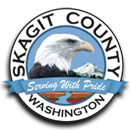Communicable Disease
COVID-19 PREVENTIONRETURNING TO WORK SAFELY: BEST PRACTICES[Download printable verison] |
||||||||||||
Skagit County is providing this guide, based on best practices shared by employers in critical industries, to help businesses safely restart. It includes information on social distancing in the workplace, cleaning and personal protection equipment, vendor and customer engagement, employee health, communications, and more. Throughout the challenges presented by the COVID-19 public health emergency, Skagit County’s goal has been to strike a balance between safeguarding health and protecting Skagit’s economy. Skagit businesses are eager to get back to work. Business operations can and should return to a sustainable level without jeopardizing employee or customer safety as our state opens back up. Businesses will need to have detailed strategies to protect their workforce from the spread of COVID-19 while ensuring continuity of operations. Businesses are eager to have access to testing that will help identify individuals who may be sick with the virus. Acceleration of testing availability is critically important to restoring public confidence and reopening our economy. You can check Skagit County’s public test site information at https://www.skagit county.net/. Even when implementing these best practices, businesses are still subject to the restrictions of current or future executive orders. The Economic Development Alliance of Skagit County has a Resource Guide for Businesses & Workers at https://www.skagit.org/covid-19-resources-for-businesses-employees.
|
||||||||||||
Washington Phases* |
||||||||||||
|
||||||||||||
| * Phases subject to change, please check https://coronavirus.wa.gov/ | ||||||||||||
|
| Vendor engagement | Employee and customer communications/instruction/signage | Customer Engagement |
|---|---|---|
Request health and travel assessments for vendors/ contractors coming on-site. Separate contractors and vendors from the workforce (have them use separate bathrooms, entrances if possible). Prohibit nonessential vendors and deliveries from entering facility. Require deliveries to be dropped outside facility door, eliminating vendors from entering facility |
Post internal signage that can be used to alert or remind employees about guidelines, expectations and responsibilities. Post external signs on doors alerting visitors to restrictions on entry and movement in and around facility as well as any applicable guidelines and expectations. |
Offer curbside delivery instead of in-store pick up. Provide on-site services to customer’s facility once their business is closed (after hours). Offer drive-through service only. Add plastic barriers/shields at registers. Ask customers to stay in their vehicles in parking lot while they wait. Offer call-ahead services for parts and service and lock door to walk-in customers. Conduct virtual sales calls. Limit the number of customers in the facility to ensure appropriate distancing, along with visual markers on floors for six-foot distancing, per CDC guidance. |
Monitoring employee health |
Social distancing |
Communications/ Education/ Responsibilities |
|---|---|---|
Conduct temperature or employee wellness checks at the start of shifts to ensure employee does not exhibit COVID-19 symptoms (fever >100.4 F, cough, shortness of breath/difficulty breathing). Create a master schedule for all employees that shows when people may come in contact with others; use this for contact tracing in the event of a confirmed or suspected COVID-19 exposure. Create a response plan for employees who report or demonstrate symptoms at work; have recently been at work and tested positive or have been in contact with confirmed COVID-19 case; or have not recently been at work but have tested positive or have been in contact with confirmed COVID-19 case. Ask employees about their health status before they return to work from a sick leave. If their illness was suspected or confirmed COVID-19 have the employee stay home at least 10 days from when symptoms first began and 72 hours after resolution of fever (without medications) and improving respiratory symptoms. Offer a variety of leave options for employees who may have to miss work because of a COVID-19-related reason Travel PoliciesRecommend a two-week quarantine |
Offer work-from home options for all employees who can perform duties remotely. Change shifts. Provide visual markers on floors for six foot distancing, per CDC guidance. Offer lunch breaks in vehicles instead of shared cafeterias or break rooms. Common use equipment should be cleaned frequently. Restrict movement between departments and/or functions (e.g. don’t allow traffic between production and office workspaces). Conduct phone/email/virtual meetings instead of in-person meetings, even when at office. Limit in-person meetings to no more than current guidance, which depends on the phase the State is in; provided appropriate spacing is possible. Hold meetings in large spaces where people can spread out at six-foot intervals. Space out desks and work stations; construct temporary walls between workstations. |
Communicate and educate employees and management to carry out the plan and protocols, as well as clear direction on roles and responsibilities. For example: Post signs on door to instruct customers/ visitors on business’s safety protocols. Provide remote workers with a list of free Provide pre-recorded safety training videos for customer-facing activities. Maintain an up-to-date repository on the company’s shared network that allows employees to access all COVID-19 documents, resources, and company protocol. |
COVID-19 Business Questions?
EDASC’s COVID-19 Business Toolkit is updated daily and includes resources to help your business through this crisis. For individual business assistance, email office@Skagit.org
Resources:
https://www.doh.wa.gov/Coronavirus/workplacehttps://www.lni.wa.gov/safety-health/safety-topics/topics/coronavirus
https://www.cdc.gov/coronavirus/2019-ncov/community/guidance-business-response.html
https://www.skagit.org/covid-19-resources-for-businesses-employees
https://www.skagitcounty.net/Departments/HealthDiseases/coronavirusdriveup.htm





















